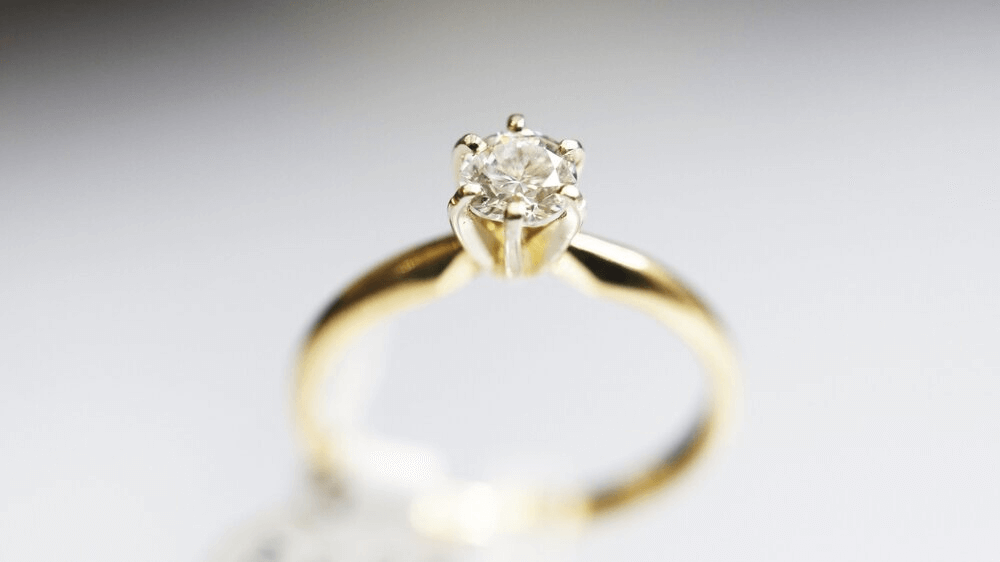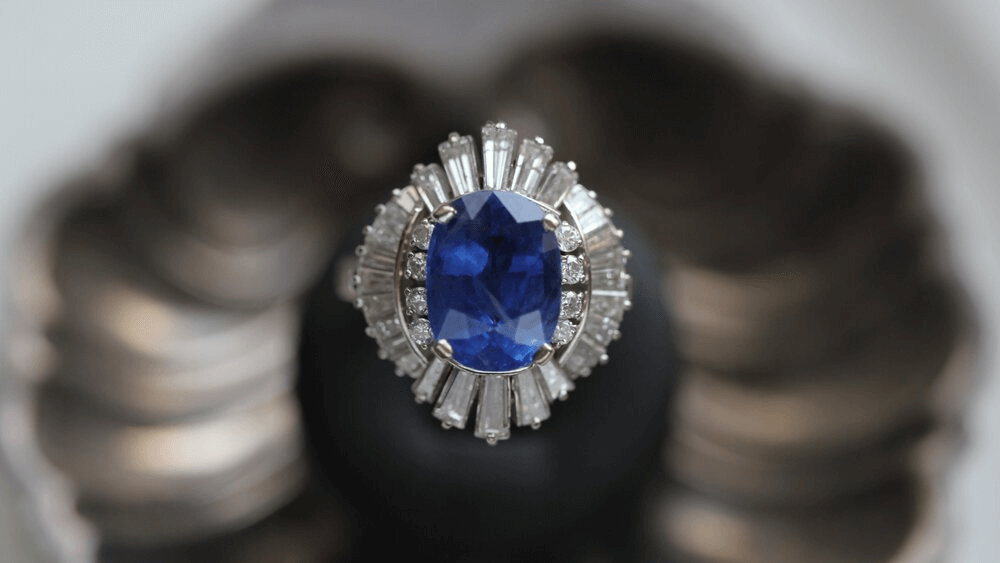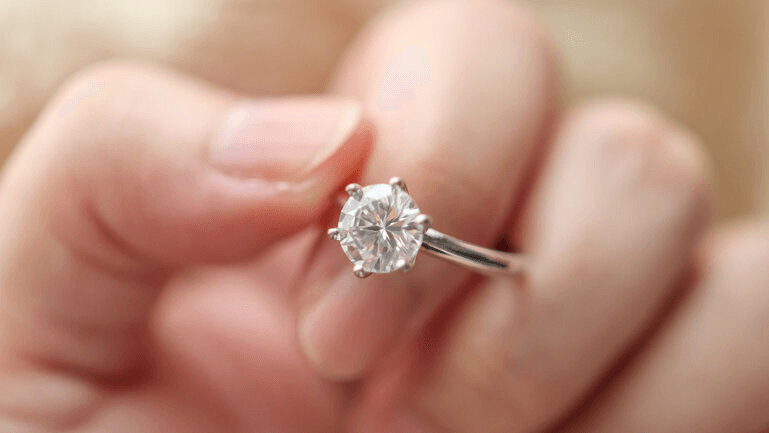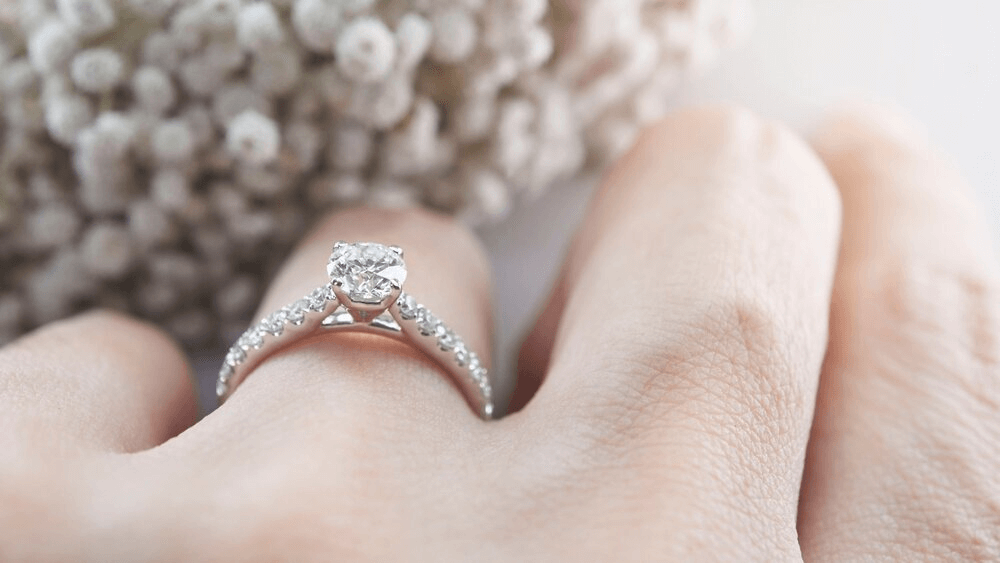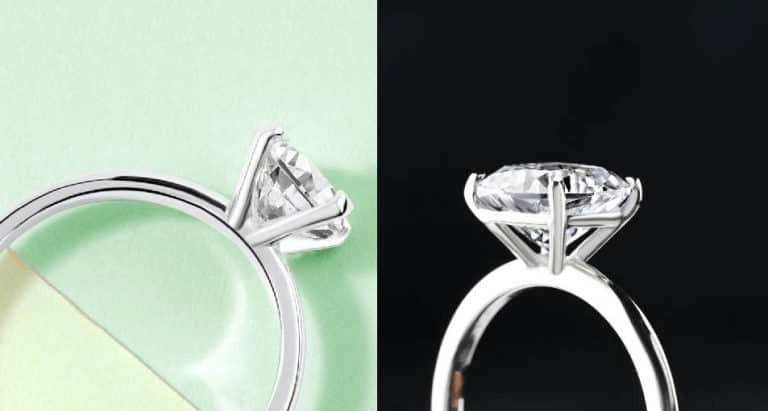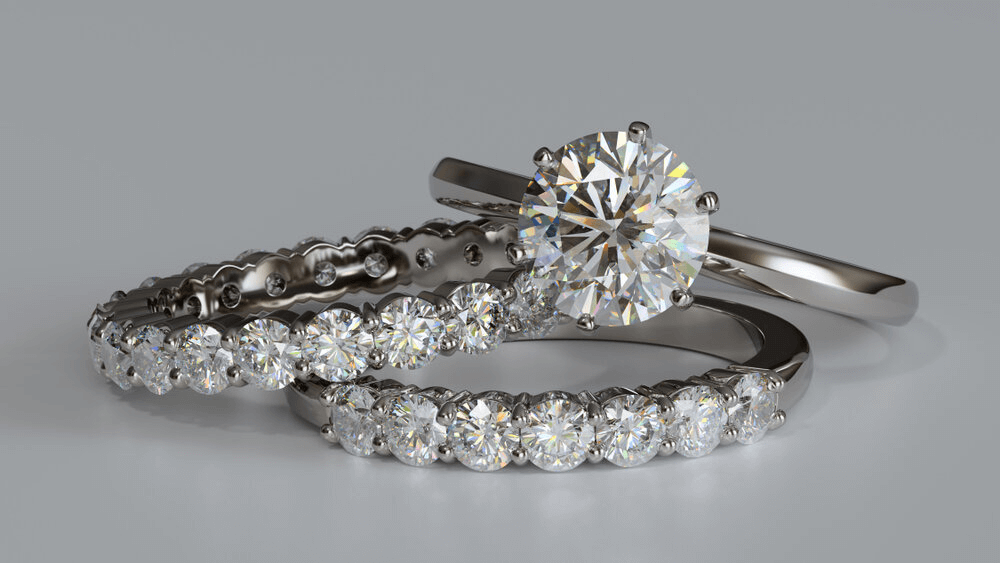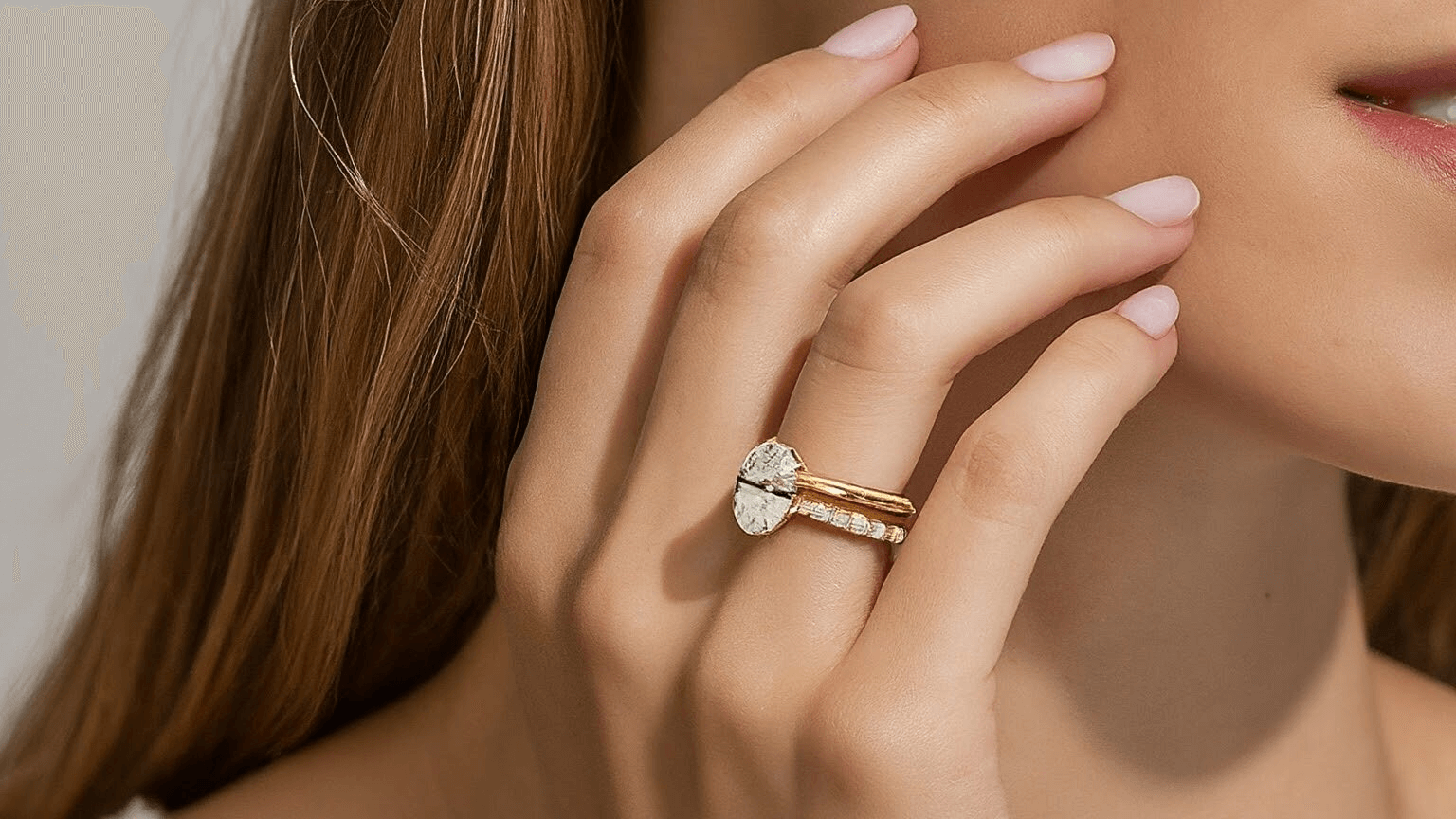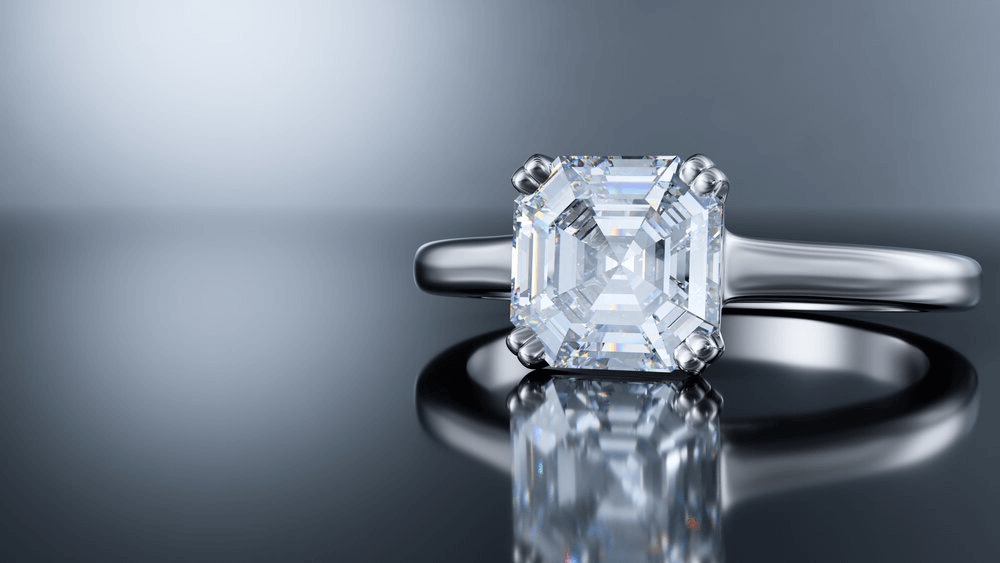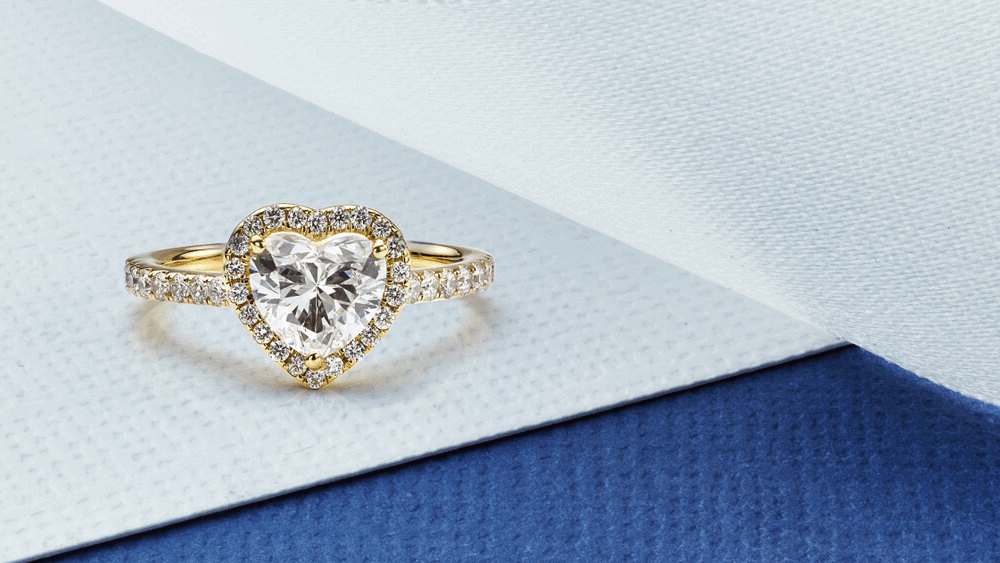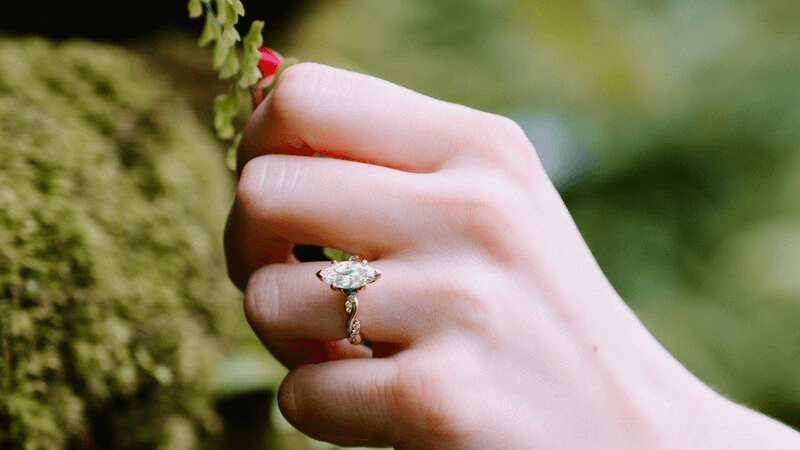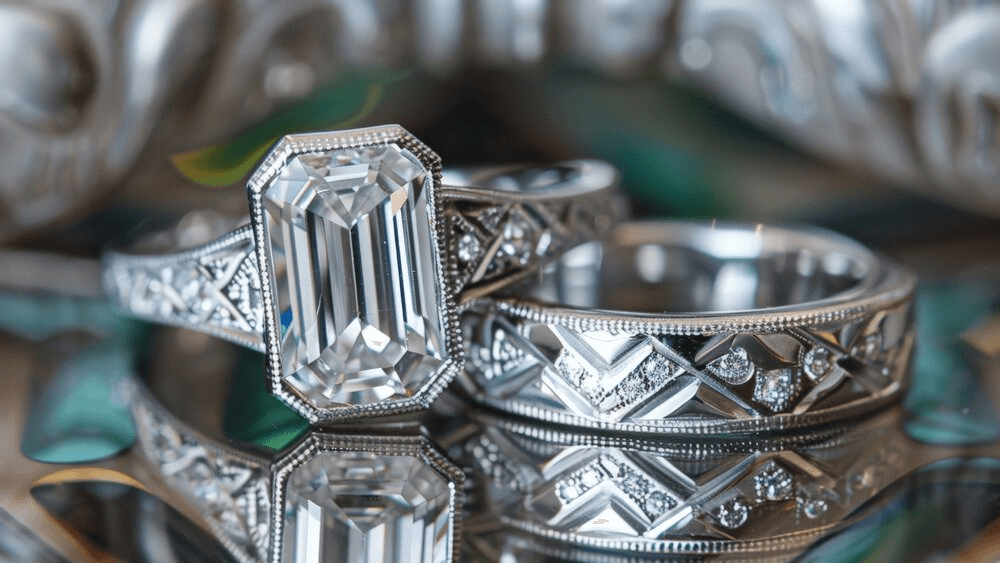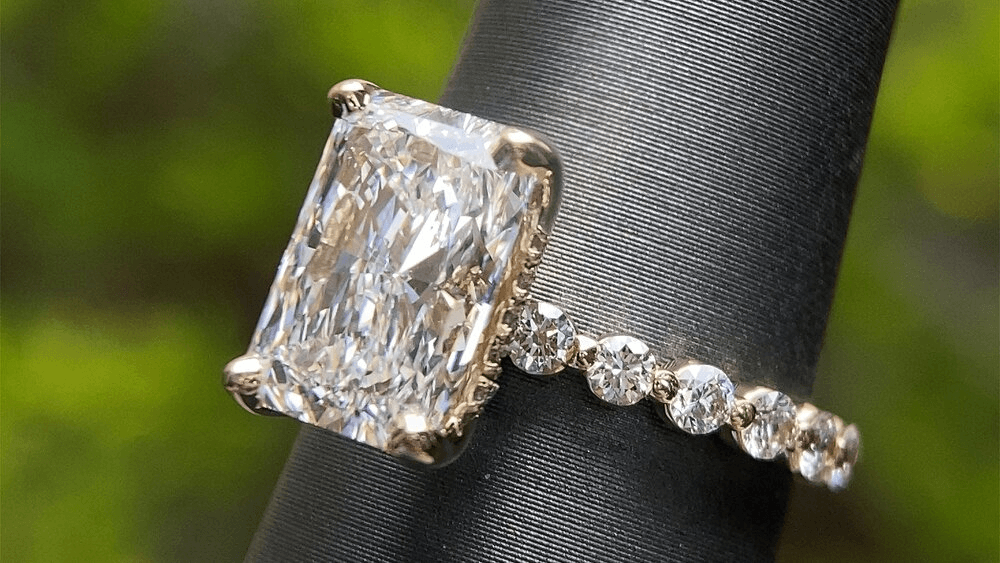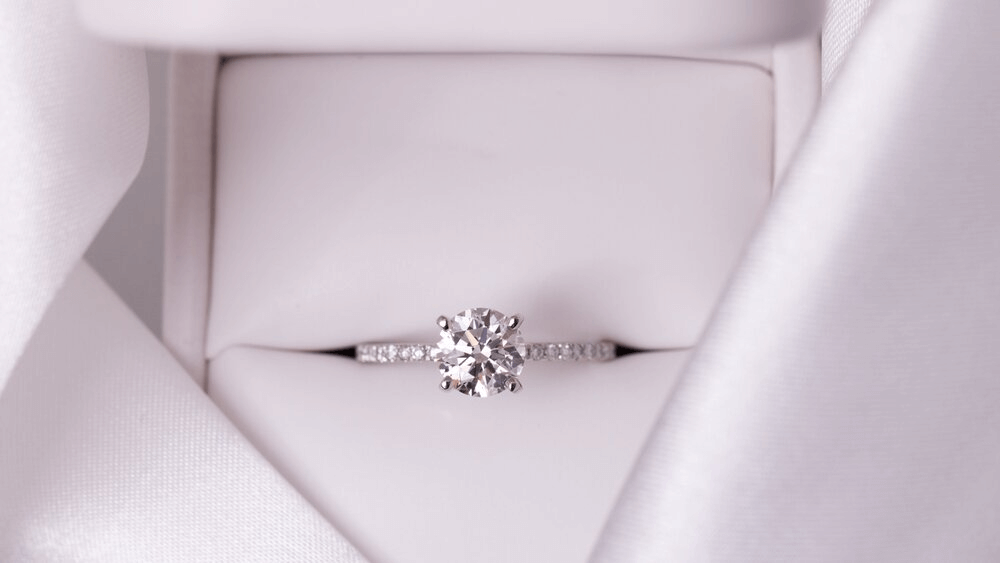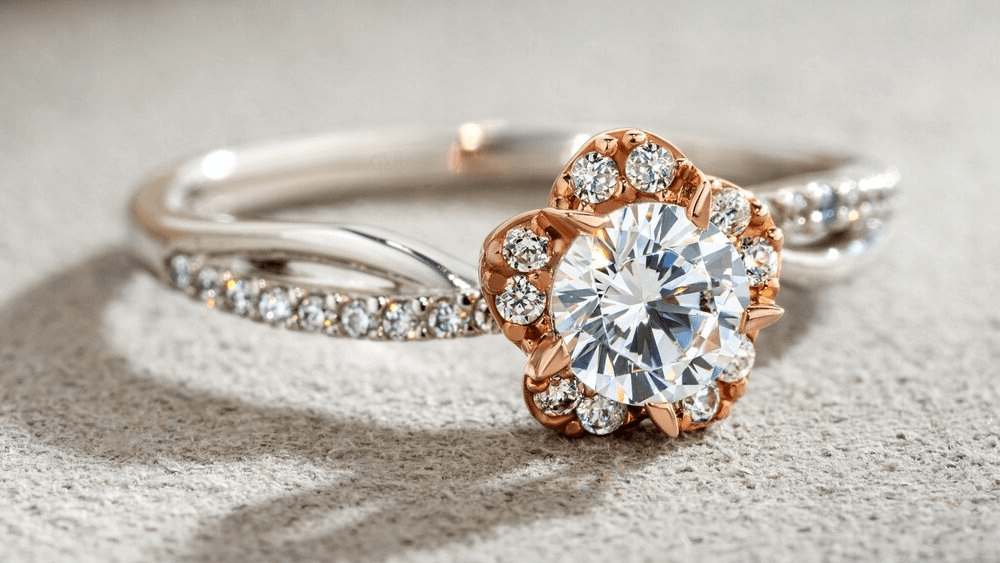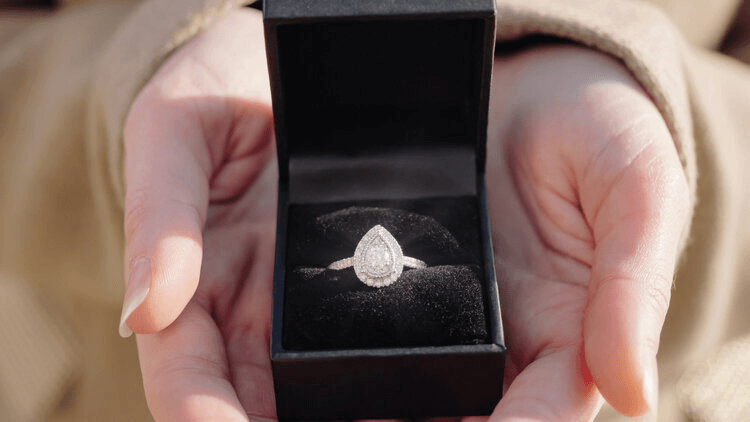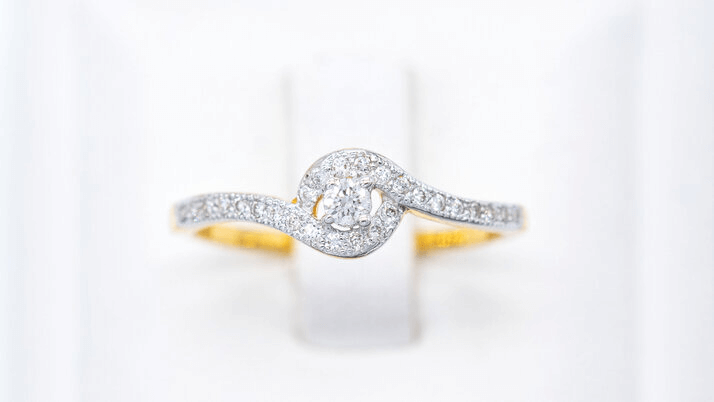Twisted Romance: Spiral Band Rings That Dazzle

By Gary A.

Edited by Olivia H.
Published Aug 13, 2024
Edited on Mar 31, 2025
Explore the magic of swirl and twisted band engagement rings, blending elegance and tradition with a modern twist, in this guide to timeless romance.

Navigate this guide:
- 7 Quick Tips for Choosing a Swirl and Twist Engagement Ring
- Introduction to Swirl and Spiral Engagement Rings
- The Brilliance of Swirl and Twisted Bands
- Comfort and Style: A Perfect Union
- Complementing Wedding Bands
- Our Expert Take: A Symbol of Eternal Love
- 10 Frequently Asked Questions About Swirl and Twisted Engagement Rings
Before we dive deeper into the specifics, here are some practical tips to help guide your decision-making process:
7 Quick Tips for Choosing a Swirl and Twist Engagement Ring
Tip 1. Understand the 4 Cs:
- Cut: Determines how well the diamond reflects light. Especially for swirl and spiral settings, a well-cut diamond will enhance the overall design by maximizing sparkle.
- Color: Ranges from D (colorless) to Z (light yellow). Consider the metal of the band; for instance, warmer colored diamonds might look better with yellow or rose gold.
- Clarity: Refers to the internal and external imperfections. While some inclusions might be hidden by certain settings, with twisted bands, you’ll want a stone that’s as clear as possible.
- Carat: The size of the diamond. Ensure the carat size complements the setting and doesn’t overpower or get lost in it.
Tip 2. Examine the Setting Closely:
- For swirl, spiral, and twisted band settings, ensure the metalwork is smooth and free from defects. The swirls and twists should be symmetrical and well-defined.
Tip 3. Check the Security of the Stone:
- The diamond should be securely held in place. With unique settings, it’s crucial to ensure that the prongs or bezel are not loose, which could risk the stone falling out.
Tip 4. Consider the Band’s Durability:
- Twisted and intricate designs might have thinner parts that can be susceptible to bending or breaking. Opt for durable metals like platinum or palladium, especially if the wearer has an active lifestyle.
Tip 5. Think About Future Resizing:
- Swirl, spiral, and twisted bands might be challenging to resize without disrupting the design. It’s essential to get the size right initially or choose a design that can accommodate future adjustments.
Tip 6. Match with a Wedding Band:
- If you plan to wear the engagement ring with a wedding band, consider how the two will fit together. Some swirl or twisted designs offer matching wedding bands, while others might require custom bands to fit snugly.
Tip 7. Get Certified and Insured:
- Ensure the diamond comes with a certification from a reputable lab, detailing its 4 Cs. Given the unique design and the value of the ring, it’s also wise to get it insured.
Now that you’ve got these practical tips, use Jeweler AI below to find the perfect engagement ring that suits your style and budget:
Introduction to Swirl and Spiral Engagement Rings
What’s more beautiful than the branch of an ancient tree, elegantly twisting its way through the busy airspace of a forest? Or a curl of smoke winding its way upward from a candle that burned all the way through a romantic dinner? Or how about two sets of fingers meandering through one another as a happy couple strolls along the beach at sunset?
We’re getting carried away, but you get the idea: twists and swirls of one element with another can be very beautiful and, you guessed it – very romantic.
Take a look at twisted band engagement rings, which feature swirls and spirals of metal winding endlessly beneath the diamond.
The Brilliance of Swirl and Twisted Bands
Swirl and twisted band engagement rings are characterised by one (or more) twists of metal along the length of the band (or shank). These twists can be wide and open with visible space between the two strands of metal, or tightly coiled to create one solid piece.
At times, the twisting will continue along the entire circumference of the band. Others, it will offer a smooth, comfortable section to sit on the underside of the finger.
A twisted band can really elevate a design and give your diamond extra sparkle and beauty.
Enhancing Diamond Sparkle
A plain metal band, even if it features a twisted design, won’t necessarily add any additional sparkle to your diamond. But, with two (or more) strands of metal to work with, you’ve got a lot more opportunities to add in light-boosting embellishments like pavé or channel set melee diamonds.
With extra diamonds producing their own brilliance and fire, the overall impact of the center diamond’s sparkle appears stronger and more vibrant.
Of course, this one isn’t limited just to twisted shank engagement rings. Wide band engagement rings also offer more scope for accent diamonds, although the spiral gives you the opportunity to mix plain metal with pavé. It’s just a little more versatile, with that extra visual appeal, too.
A Symphony of Metals
There’s also scope for integrating a mix of metals into the engagement ring. This is one of the more divisive design elements for bridal jewelry – or, really, any jewelry – since most of us have a clear preference for, say, yellow gold or platinum, rose gold or white gold – and would rather not have a collection that mixes too many metals together.
Then again, rules were made to be broken, and a lot of people are now enjoying the look of an engagement ring that brings together multiple tones and hues of metal.
There are tons of different ways to create a mixed metal engagement ring, but a swirl and spiral ring is one of the most striking.

Comfort and Style: A Perfect Union
Twisted or swirl and spiral engagement rings can be very comfortable to wear. Despite the fact that they represent a twist (pun intended) on the traditional shank design – and big departures from ‘the norm’ tend to impact wearability to a certain extent – A twist definitely doesn’t need to redefine your entire approach to wearing rings.
Some people may find that a closed twist – aka, one without any gaps between the strands of metal – is more comfortable since it’s less likely to pinch the skin. It’s just down to personal preference.
As we mentioned above, some designs feature a section of untwisted metal that sits on the underside of the finger. This can prove more comfortable for some people, but, again, it just depends on what you’re used to – or what you’re willing to get used to.
Complementing Wedding Bands
A lot of people like to echo some design elements between the wedding band and the engagement ring. A swirl and spiral ring design is the perfect option since it’s not so ‘out there’ that it looks excessive to repeat the design between two different bands.
If you’re open to the idea of mixed metals, then, between your engagement ring and your wedding band, you may well be able to integrate every major, precious metal out there. Platinum, yellow gold, white gold, rose gold, and maybe even black gold – there’s a lot to use if you’re open to making something unique.
Seamless Stacking Options
Keep in mind that a twisted or swirling band won’t set perfectly flush with any other bands on the same finger. It’s inevitable that a twisted band won’t have a perfectly straight edge to it, so, whether the band you wear alongside it is straight or also swirled, there will be some very minor gapping between the two.
This is unavoidable, and it doesn’t have to be a big deal but keep in mind That the title the twist, the less gapping there will be. The more Celtic designs that feature bigger, loopier twists will create bigger gaps, and this may (or may not) bother the wearer. It all depends on personal preference.
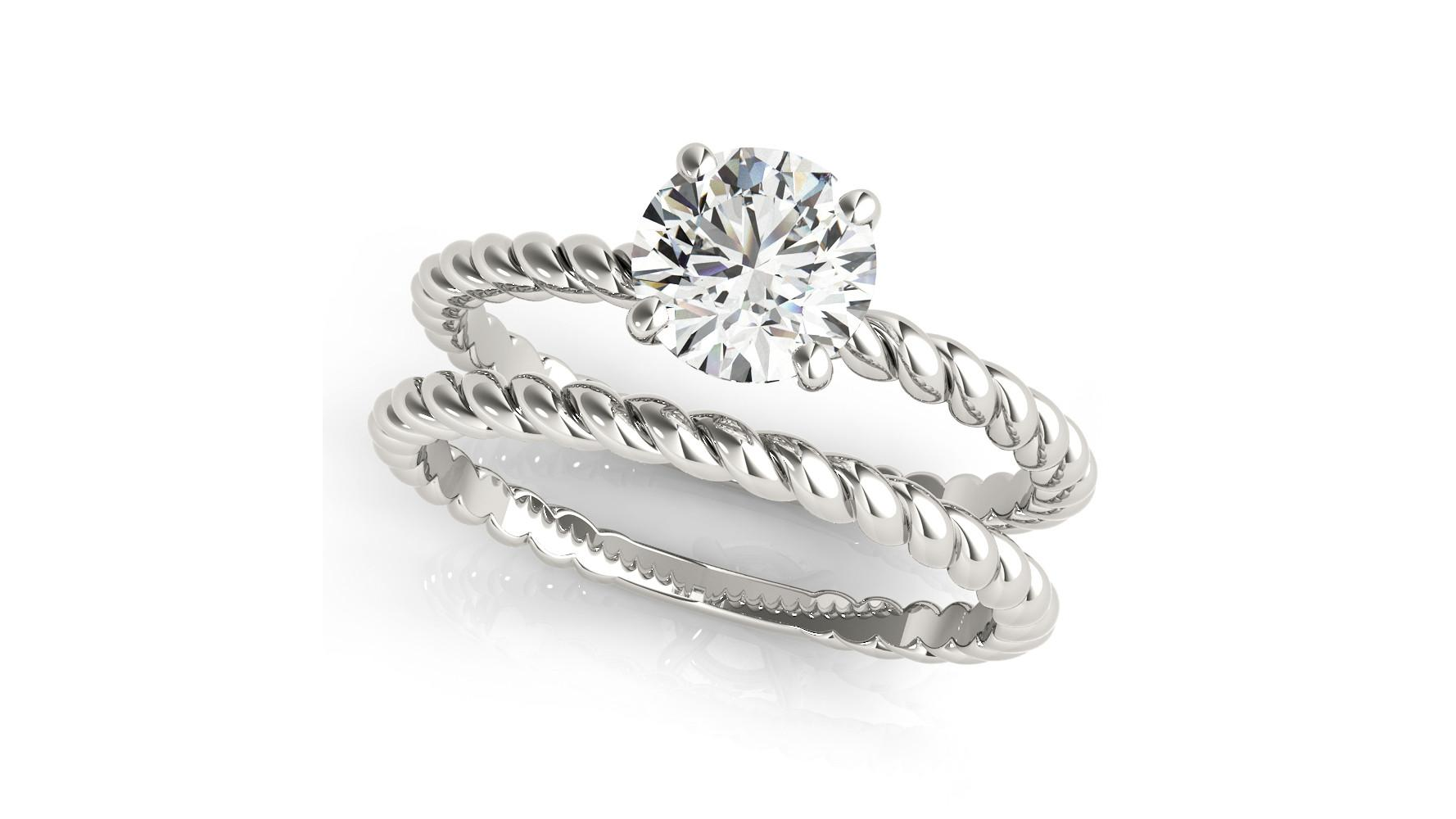
Our Expert Take: A Symbol of Eternal Love
Choosing a swirl or twisted band engagement ring isn’t just about style—it’s about embracing a design that intertwines tradition with a modern twist. These rings capture the essence of romance with their flowing lines and sparkling accents, making your diamond the star of the show. Whether you’re drawn to the allure of mixed metals or the timeless elegance of a single metal, the options are endless and entirely yours to explore.
Remember, the beauty of a twisted band lies in its ability to symbolize the winding journey of love, always growing, always shining. So, why not let your ring tell a story as unique as your own?
10 Frequently Asked Questions About Swirl and Twisted Engagement Rings
- Q: Can swirl or twisted band engagement rings be resized?
- A: Yes, many can be resized, but it’s more complex due to their intricate designs. It’s crucial to consult with a jeweler experienced in resizing such unique styles to ensure the integrity of the design is maintained.
- Q: Are swirl and twisted band engagement rings more expensive than traditional settings?
- A: The cost can vary widely depending on the complexity of the design, the metal used, and whether it includes additional diamonds or gemstones. Generally, more intricate designs can be more expensive due to the craftsmanship required.
- Q: How do I clean my swirl or twisted band engagement ring?
- A: Use a soft-bristled brush with warm soapy water to gently clean the ring. Avoid harsh chemicals and ensure the ring is dried thoroughly. For intricate designs, consider professional cleaning to maintain its beauty.
- Q: Can I wear my swirl or twisted band engagement ring every day?
- A: Yes, these rings are designed for everyday wear. However, it’s wise to remove them during heavy physical activities to prevent damage. Choosing a durable metal like platinum can also enhance longevity.
- Q: How do I ensure the diamond in my swirl or twisted band engagement ring is ethically sourced?
- A: Purchase from reputable jewelers who provide certification for their diamonds, indicating they adhere to ethical sourcing practices. Look for certifications like those from the Kimberley Process or Responsible Jewellery Council.
- Q: Is it possible to customize a swirl or twisted band engagement ring?
- A: Absolutely! Many jewelers offer customization services allowing you to create a unique ring that perfectly matches your style and preferences. This can include choosing the type of metal, the diamond’s cut, color, clarity, and carat size.
- Q: How do I choose the right metal for my swirl or twisted band engagement ring?
- A: Consider durability, color preference, and lifestyle. Platinum and palladium are highly durable and suitable for everyday wear. Gold, available in various colors, offers a traditional look but may require more maintenance.
- Q: Can swirl or twisted band engagement rings hold any diamond shape?
- A8: Yes, these versatile settings can accommodate various diamond shapes. However, some designs might complement certain shapes better, so it’s beneficial to try different combinations to see what looks best.
- Q: Are there matching wedding bands available for swirl or twisted engagement rings?
- A: Many designers offer matching wedding bands specifically designed to complement their swirl or twisted engagement rings, ensuring a perfect fit and cohesive look.
- Q: How do I choose the right size for my swirl or twisted band engagement ring?
- A: It’s best to have your finger professionally measured by a jeweler. Keep in mind that finger size can fluctuate due to various factors, so consider getting measured at different times of the day.
Find your perfect swirl and spiral, twisted band engagement ring with Jeweler AI – where your dream ring becomes reality.
FOLLOW-UP GUIDE SERIES





